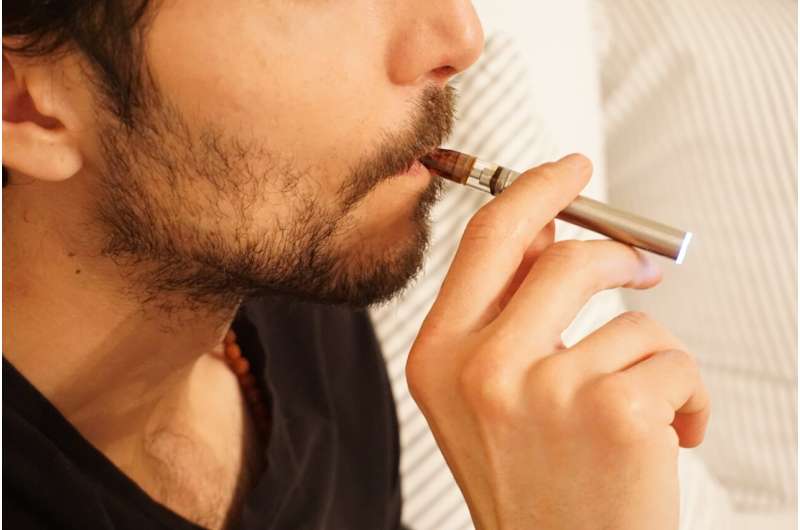Credit: Elsa Olofsson/Unsplash
In the absence of guidance from the Therapeutic Goods Administration (TGA), authors writing in the Medical Journal of Australia have provided advice to GPs about prescribing e-liquids for e-cigarettes to smokers trying to quit tobacco cigarettes.
Dr. Miranda Ween, a Senior Postdoctoral Researcher at the Royal Adelaide Hospital, Associate Professor Alexander Larcombe, of Curtin University and the Wal-yan Respiratory Research Centre, and Dr. David Chapman, from the University of Technology Sydney, wrote that although the TGA had released a Standard for Nicotine Vaping Products (TGO 110) effective from 1 October 2021, the order "does not refer to e-cigarettes themselves (which remain unapproved by the TGA as smoking cessation devices), but rather the nicotine-containing liquids (e-liquids) used in them."
Since 1 October, e-cigarette users can only legally access e-liquids containing nicotine locally with a prescription from an authorized prescriber or via a special access scheme through an Australian pharmacist registered to supply nicotine.
"TGO 110 provides no guidance to GPs as to how to manage e-cigarette prescriptions, but Royal Australian College of General Practitioners guidelines advise that doctors should promote approved nicotine replacement therapies (NRTs) and proven pharmaceutical therapies accompanied by behavioral support before considering e-cigarettes," the authors wrote.
"As always, doctors should use their own judgment of a patient's intent before prescribing any medication."
The authors provided advice on the following issues:
Concentration of nicotine: "At present, there is little evidence as to the 'ideal' nicotine concentration in e-cigarettes to help tobacco smokers to transition to complete nicotine abstinence. However, e-liquids containing 18 mg/mL have been shown to reduce cravings to a similar extent as traditional tobacco cigarettes, and have been reported as adding small benefits on tobacco smoking cessation above those obtained with NRTs. As such, 18 mg/mL, which is close to the EU maximum concentration of 20 mg/mL,5 may be a prudent starting concentration."
Behavioral support: "Ongoing structured behavioral support is needed to attain nicotine abstinence … GPs should therefore consider prescribing nicotine-containing e-liquids for short periods as part of an agreed abstinence plan … allowing monitoring of progress and any negative health effects at regular intervals. This is important, as long-term use of e-cigarettes may itself increase the risk of adverse health effects."
Flavors: "Given that the long-term health effects of e-cigarettes remain largely unknown, unflavoured e-liquids should be preferentially prescribed. It is critical that [patients] be educated that no flavoring chemicals are approved for inhalation and that there is evidence that many pose a risk to health. This should be part of the discussion as to why complete abstinence should be the goal rather than long term e-cigarette use."
Nicotine absorption: "Studies have shown that [some] flavored e-liquids can significantly increase plasma nicotine levels up to 1.66 fold, likely associated with the effect of flavourants on acidity and nicotine absorption. This suppression could lead to vapers using e-cigarettes more frequently, or using e-liquids with higher nicotine concentrations, to elicit the same nicotine reward. Taken together, these findings warrant caution in prescribing flavored e-cigarettes, to ensure that they do not lead to increased and/or prolonged use of e-cigarettes."
More information: Miranda P Ween et al, What doctors should consider before prescribing e‐liquids for e‐cigarettes, Medical Journal of Australia (2021). DOI: 10.5694/mja2.51351
Journal information: Medical Journal of Australia
Provided by Medical Journal of Australia























